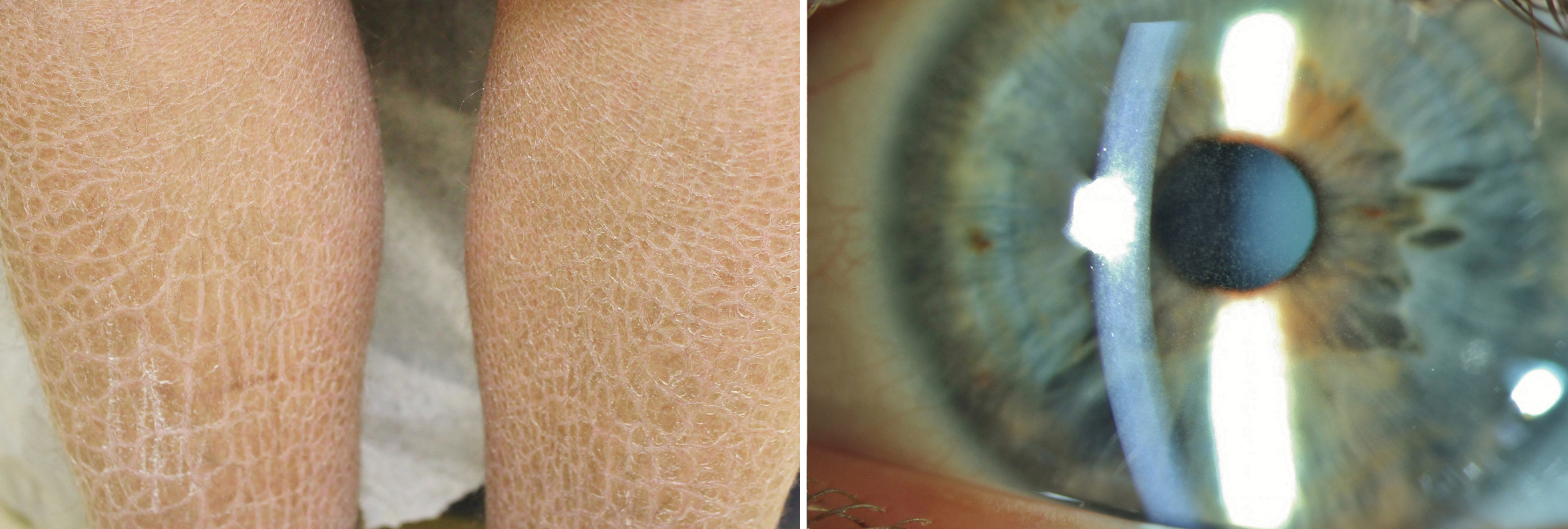Corneal opacities and dry skin
Main Article Content
Abstract
A 23-year-old man presented to the Dermatology Clinic at Naval Medical Center Camp Lejeune with brown, scaly skin since infancy despite regular application of topical steroids and emollients. He was born via Cesarean section and encased in a collodion-like membrane. On examination, adherent brown, xerotic scales (A; shins) covered his body except for his face, scalp, palms, soles, and flexural surfaces, and he recently developed intermittent blurry vision and floaters. Slit-lamp examination showed bilateral diffuse posterior pinpoint corneal opacities (B; left eye) from limbus to limbus. The findings were consistent with X-linked ichthyosis. Deficient steroid sulfatase causes cholesterol sulfate to accumulate in the epidermis and impair corneocyte shedding, producing hyperkeratosis that appears within the first months of life. The pathophysiology of the corneal opacities is less well understood and may result from accumulation of cholesterol sulfate or accumulation of proteinaceous byproducts from abnormal corneal basal epithelium or some combination of both. The corneal alterations do not usually affect visual acuity but can predispose individuals to corneal erosions. Female carriers of the disease can demonstrate similar corneal findings without any other clinical findings, and mothers carrying an affected fetus can experience prolonged labor from placental sulfatase deficiency. Affected males carry an increased risk for cryptorchidism, sperm abnormalities, teratomas, inguinal hernias, and unilateral renal agenesis. The patient was treated with 20% urea cream and 5% salicylic acid ointment and instructed to limit excess bathing. He will be followed by Ophthalmology for annual slit-lamp photography and was referred to Urology.
Downloads
Article Details

This work is licensed under a Creative Commons Attribution-NonCommercial-NoDerivatives 4.0 International License.
